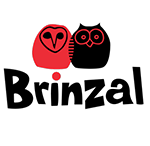Suben las temperaturas, sale el sol y llegan los primeros autillos (Otus scops). La más pequeña de las especies de rapaz nocturna que habita en nuestro territorio cruza medio continente Africano antes de llegar a su zona de cría: Europa.
Desde hace unos días nos han ido comentado que se les estaba empezando a escuchar al caer la tarde, pero no fue hasta el pasado viernes cuando ingresaron los primeros autillos a Brinzal. Su sintomatología no es seria, un golpe contra una ventana o simple desgaste después del largo viaje. Lo ideal es ponerlos a punto lo antes posible y que en pocos días sean liberados para que puedan buscar pareja y criar una nueva generación de autillos madrileños.
A estos que liberaremos pronto, esperamos que se unan aquellos que han tenido que pasar el invierno en nuestras instalaciones, ya que no se recuperaron a tiempo de sus lesiones. En una instalación cerrada, donde intentamos recrear unas condiciones de temperatura y humedad parecidas a las que tendrían en sus sitios de invernada, han pasado los últimos 5 meses a la espera del buen tiempo.
Para nosotros este hecho marca el cambio de tendencia en nuestro centro, ya que significa que hay que aumentar el esfuerzo y cambiar horarios, turnos y recibir a más voluntarias y voluntarios para que nos ayuden. En una palabra: Primavera.

